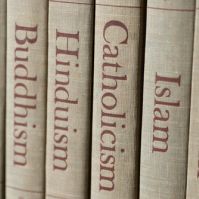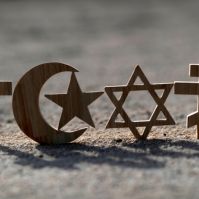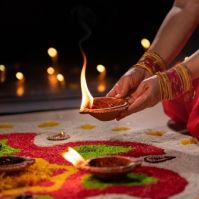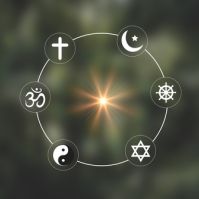 Millions of people around the world celebrate Diwali, but its historic and cultural significance doesn't receive much attention in the mass media. This festival has ancient roots and evokes the symbolism of the victory of light over darkness and good over evil. Here's a brief introduction to the global phenomenon of Diwali, the "Festival of Lights."
Millions of people around the world celebrate Diwali, but its historic and cultural significance doesn't receive much attention in the mass media. This festival has ancient roots and evokes the symbolism of the victory of light over darkness and good over evil. Here's a brief introduction to the global phenomenon of Diwali, the "Festival of Lights."
Historical Background of Diwali
The origins of Diwali are diverse, making it difficult to point to one historic moment or religious tradition. For some communities, the festival honors the return of Lord Rama and Lady Sita to Ayodhya after many years of exile. During their return, the townspeople lit thousands of oil lamps to light their way, which is why the small oil lamp, diya, is used still during this holiday. Rama is an avatar of Vishnu, and Sita is an avatar of Lakshmi, both central gods in the Hindu pantheon. Lakshmi is the goddess of prosperity and plays a central role in Diwali celebrations.
Another mythological tale that factors into this holiday is the story of how Lord Krishna defeated the demon king Nakasura. People use lights and fireworks to symbolize the overwhelming goodness of Krishna in his fight against evil.
For people celebrating this holiday in modern times, the focus is on family, gatherings, and enjoying a festive atmosphere. Diwali represents the celebration of common values across many diverse and unique communities.
Rituals and Traditions of Diwali
Preparations for Diwali begin weeks in advance, with families cleaning and renovating their homes. The process symbolizes the removal of negativity and the welcoming of positive energies. The entire festival lasts five days. The first day, third day, and fifth day hold the most significance and involve unique ceremonies.
The first day of Diwali is a day to invite the goddess of prosperity to bless homes and businesses. People design and make intricate rangoli for this part of the holiday. Rangoli are vibrant patterns made with colored powders, rice, flowers, and candles. These dynamic offerings adorn entrances and act as a warm welcome to Lakshmi, the goddess of wealth, so that she will feel inspired to enter and bless the residence.
The second day of Diwali is mostly used to prepare for the other days, but some people also include religious prayers and rituals, or pujas. On the third day, people celebrate Diwali by setting off fireworks and hanging blinking lights on their homes and businesses. This is the most publicized part of Diwali because it is joyful and boisterous.
After marking the fourth day of Diwali with various rituals depending on each family's religious background and individual traditions, people celebrate the fifth day, Bhai Dooj, with their siblings. The last day of Diwali is a time of gift-giving, and it's an important event to share with family.
Unique Celebrations of Diwali
While Diwali has deep roots in Hindu traditions, its celebration transcends religious and cultural boundaries. In countries like India, Nepal, Sri Lanka, Fiji, and Bangladesh, Diwali is a public holiday, and all of these places have different ways of celebrating.
In Fiji, schools and other public organizations invite people to make elaborate rangoli to celebrate Lakshmi puja. Figurines made out of sugar, called misiri, are a famous part of Diwali celebrations in Sri Lanka.
People in Nepal refer to the festival as Tihar and use each day to honor a different entity, including:
- Crows
- Dogs
- Cows and Oxen
- Lakshmi
- The Self
- Siblings
In each country, the festivities feature the use of lights. From small oil lamps to brilliant displays of lanterns and string lights, it is a holiday that leaves a bright impression.



